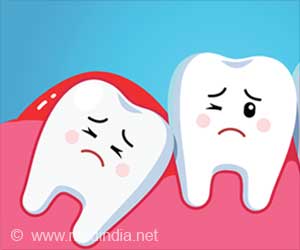For many children, a trip to the doctor or dentist is a stressful experience.
For many children, a trip to the doctor or dentist is a stressful experience. The sensory environment (i.e., the sounds, smells, and lights associated with the clinical setting) can cause a child's anxiety levels to rise.
This is especially true in children with developmental disabilities who may have difficulty understanding the unfamiliar clinical environment. A new study soon to be published in The Journal of Pediatrics explores the relationship between the sensory environment and anxiety levels in children.Dr. Michele Shapiro of the Issie Shapiro Educational Center and colleagues from Hebrew University in Israel studied the effects of the sensory environment on a child's anxiety levels during two separate routine cleaning visits to the dentist.
The researchers observed 35 children between the ages of 6-11 years, 16 of whom were developmentally disabled. They measured the anxiety levels of the children during each visit using a behavior checklist and monitored each child's electro-dermal activity, an objective measure of arousal.
The first trip included the typical sensory experiences of a dental office, including fluorescent lighting and the use of an overhead dental lamp. During the second trip, however, the researchers created a sensory adapted environment that modified the experience of the children. No overhead lighting was used, a slow moving repetitive color lamp was added, and the dental hygienist wore a special LED headlamp that directed the light into the child's mouth. The children listened to soothing music and were wrapped in a heavy vest that created a "hugging" effect. The dental chair itself was also modified to produce a vibration.
Dr. Shapiro and her colleagues found that anxiety levels decreased in all children when the sensory adapted environment was used. The duration of anxious behavior dropped significantly, from an average of 3.69 minutes to 1.48 minutes in typical children. The decreased anxiety levels were even more notable in children with developmental disability, with averages dropping from 23.44 minutes to 9.04 minutes.
Dr. Shapiro and her colleagues are hopeful that this new method may have a potential use in other medical settings as well. As Dr. Shapiro notes, "This new approach may even replace sedatives and other invasive procedures in the future."
Advertisement
SRM












